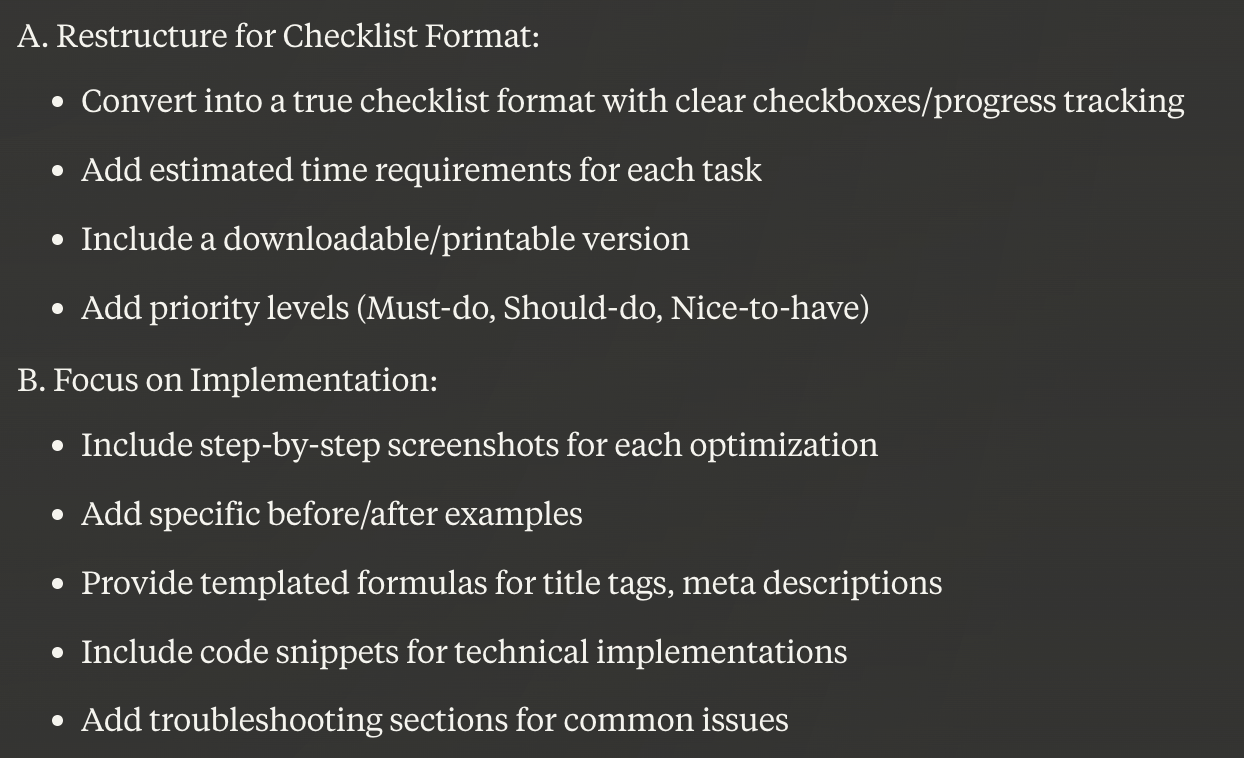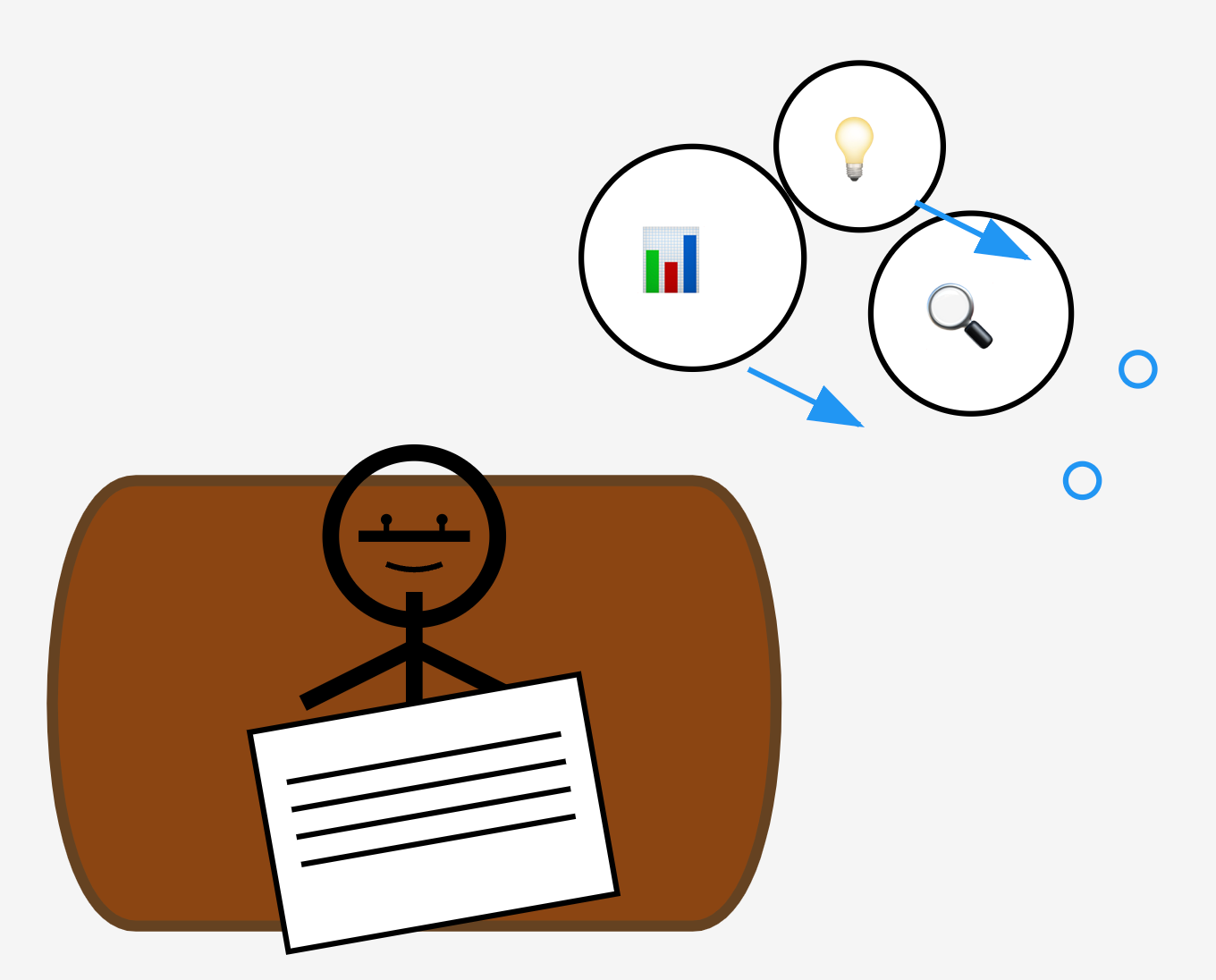When working with content, Claude is always my tool of choice. I find that it understands intent more than ChatGPT, and it's pretty good at working with articles and blog posts.
(Again, I should clarify that I don't generate blog posts with Claude. I work with Claude to analyze human-written content.)
This week I was tasked with editing two articles targeting very similar keywords. The intent for the keywords was subtly different, but the articles contained more or less the same steps. I knew that these articles would cannibalize each other if we published them as-is.
Claude did a really good job of analyzing the articles in the same way that I did. And it devised a plan that was in line with what I wanted to do to fix one of them and solve the problem. It was just faster to do it in Claude than write it all out myself.
Setting the Scene for Claude
Claude is a people pleaser. It can flip-flop between opposite outcomes depending on the prompt and the task. If you challenge it, it backs down and confuses itself.
The best way to avoid this is to tell it what you already know. It cuts the dithering out of the conversation and lets Claude get to the point.
Tip: When working with large documents, I like to use the web interface. I could use the API through Typing Mind, yes. But I just prefer the responses I get in the web version. So I always use Claude early in the morning here in the UK, before the US has woken up. It's more accurate, and I don't have to use Concise mode, which isn't as good for this task.
I started with this prompt:
I need you to analyze some content. You need to think about SEO best practice because we need to avoid cannibalization. One article targets the keyword "home improvement", and the second targets "home improvement checklist". I've provided both articles. When you respond, I would like you to tell me two things. 1. In your opinion, is the content too similar in these articles? 2. List ways we could differentiate the "home improvement checklist" article to best meet the search intent for "home improvement checklist".
Before sending this, I attached both articles by pasting them into the chat. It's important to paste in the text rather than uploading the HTML so you don't eat into the context window.
Here is Claude's content analysis, with some edits for confidentiality reasons.
First, the answer to my first question:
Are the articles too similar? Yes, there is significant content overlap that could lead to keyword cannibalization. Here are the key areas of overlap:
Both articles cover nearly identical core topics (title tags, meta descriptions, headings, etc.)
The structure and flow is very similar
Many of the technical recommendations are almost identical
Both use similar examples
The depth of coverage for each topic is comparable.
While some overlap is natural given the related topics, the current versions are too similar to effectively target different search intents.
After that, it answered my second question: how to change the second article to match search intent more closely. It did this in the same way that I would have done it: 25 steps in total, broken down into four groups, just like a content brief.
I can't share the exact response here because it's way too long, but as an example, here's the first half (ish).

In this case, the prompt was the key to getting a good result. It really helps to:
- Clearly define the problem, don't leave it to scratch around for the right answer
- Limit the scope of the response; this helps to stop Claude rewriting content when you didn't ask it to
- Use full responses, not Concise mode. (Which shouldn't be a thing, but there we are.)
